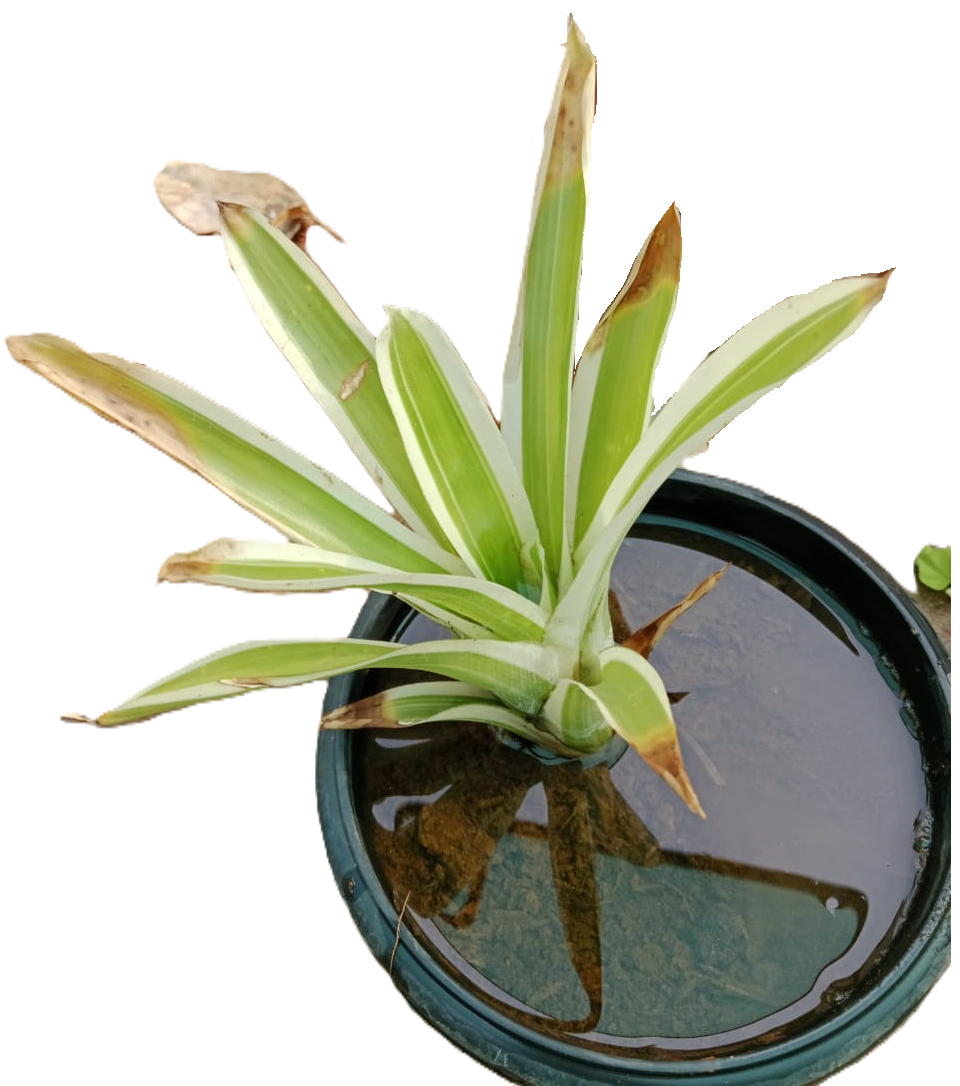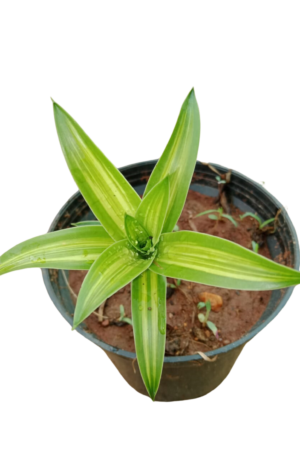₹1,199.00
Bromeliads Brocchinioideae is a native Brazilian plant that promotes biodiversity, purifies air, harvests rainwater, enhances the growth of other plants in the ecosystem by nutrient recycling.
2 in stock
Description
This is a native South American Plant with special photosynthesis that is based on temperature variation. The mother plant blooms flowers which produces offspring. Then the mother plant dies, leaving behind the offspring.
Water
Most tap water is satisfactory for growing bromeliads but avoid alkaline or salty water. Do not use softened water — it contains lots of sodium (salt). Hard water can be used without affecting plant health. It will leave spots on the leaves, however, which can make plants unsightly, especially those with shiny green leaves. If you use water with moderate mineral content, make sure you flush the centers of tank bromeliads every week to prevent the concentration of minerals that can cause leaf tip dieback.
Bromeliads prefer water on the acid side (pH 4.0-7.0), but many can tolerate water up to at least pH 8.0. If you have water problems use deionized or rain water instead but be aware that very pure water can draw nutrients out of the leaves. Add a very small amount of fertilizer to distilled water to prevent this problem. Some types of bromeliads, particularly the miniature species, are very sensitive to salts, so distilled water should always be used for these.
Temperature
Most of the commonly grown bromeliads will tolerate a wide range of temperatures, some types can even handle nights near freezing and days over 100ºF. The optimal temperature range, though, is days of 70-90ºF and nights of 50-65ºF during most of the year. It is important that temperatures fluctuate by at least 10 degrees daily because most bromeliads have a special type of photosynthesis that requires substantial day-night temperature variations. Good air circulation is really only important at high temperatures to prevent sunburn. When the air is very dry, strong air movement may cause leaf tips to dry out and die.
Fertilization
Bromeliads should be fertilized frequently with acidic, water-soluble fertilizer diluted to 1/4 to 1/8 strength. Drench the potting medium, foliage, and central tank with the mixture. Slow-release fertilizer can also be added to the potting medium of some types. However, overfertilization will result in loss of color and can also produce overgrown rosettes with poor form.
Potting
There are numerous materials that can be used for potting bromeliads. Almost any potting mix that is acidic and holds moisture, yet drains quickly, is acceptable but do not put soil in the mix. The main function of the potting mix is to hold the plant steady, not to provide water and nutrients to the roots (except for terrestrial species). Roots quickly rot in a tight or saturated potting mix. Orchid bark mixed with coarse perlite and humus (Cymbidium orchid mix) is good for most bromeliads.
Fascinating and Fun Facts
- The leaves of bromeliads, which belong to the pineapple family, are arranged in a spiral manner to resemble a rosette.
- Some bromeliad species are terrestrial, growing on soil, while others are epiphytic, growing on other plants without consuming their nutrients.
- Bromeliads are extremely diversified and visually appealing because of their wide range of shapes, sizes, and colors.
- Bromeliads are renowned for having flowers that linger for weeks or even months and give a splash of color to any setting.
- Because they can thrive in a variety of conditions, including deserts and rainforests, bromeliads are adaptable plants that may be used in a variety of home and garden settings.
- The majority of bromeliad species only produce flowers once in their lives, after which they produce “pups” that develop into new plants. This is an unusual method of reproduction.
- In addition to being well-liked by gardeners, bromeliads have cultural significance in many areas, where they are employed in customary rituals and celebrations.
- The plants harvest rainwater by storing the water in a special tank formed by them.
Bromeliad plants are a wonderful addition to any home or outdoor space because of their beautiful beauty, beneficial properties, and fascinating traits.
Medicinal Usage
- Air purification: Bromeliads remove air pollutants like formaldehyde and xylene at night.
- Stress reduction: Caring for a bromeliad can be a stress-relieving form of gardening.
- Allergy treatment: Bromeliad leaf juice can help fight allergies.
- Pain relief: Bromelain, a chemical derived from bromeliads, has anti-inflammatory and analgesic properties that may help with pain, swelling, and joint stiffness.
- Diabetes management: Bromeliad leaf juice may help manage diabetes.
- Cancer risk reduction: Bromeliad leaf juice may lower the risk of cancer.
- Heart health: Bromeliad leaf juice may help keep the heart healthy.







Reviews
There are no reviews yet